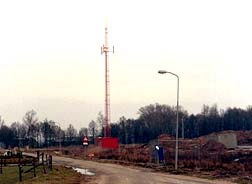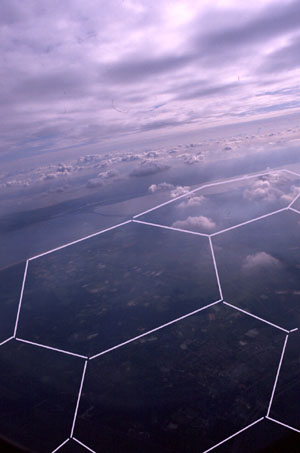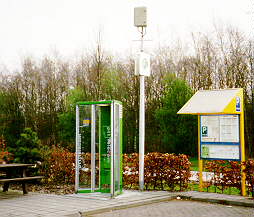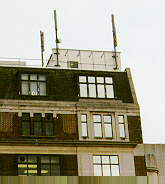
Cell Sizes

 The
fact that the user capacity of cellular networks can be increased by reducing
cell sizes currently stimulates the development of micro- and pico- cellular
networks. In macro-cellular networks cell sizes usually range from 1 to 20 km.
The
fact that the user capacity of cellular networks can be increased by reducing
cell sizes currently stimulates the development of micro- and pico- cellular
networks. In macro-cellular networks cell sizes usually range from 1 to 20 km.
Typically, micro-cellular networks have cell sizes of 400 metres to 2 km, and
pico-cellular nets have cell sizes of 4 to 200 metres. For pico- and micro-cellular
networks, the name 'personal' communication is often used: most macro-cellular
telephone nets are designed for use within cars and may be too bulky and power-consuming
to be conveniently portable. With micro- and pico-cellular networks, low transmit
powers, say less than 20 mW, can be used, allowing miniaturisation of the handheld
terminal.

In summary, we distinguish between
- Macro-cellular nets, with cell radius 1 - 30 km
- Micro-cellular net, with cell radius 200 - 2000 m
- Pico-cellular nets, with cell radius 4 - 200 meter
 Decreasing cell size gives
Decreasing cell size gives
- Increased user capacity
- Increased number of handovers per call
- Increased complexity in locating the subscriber
- Lower power consumption in mobile terminal:
so it gives longer talk time, safer operation
However, system design differs for macro, micro and pico cells:
- Small cells have a different propagation environment
- Different cell layout, micro-cells are often confined to one block of an urban street grid.
|
|

Start page of video from Short Course
by BMRC
Video from Wireless Communications Networks Short Course
"Typical cell sizes for the cellular phone system are one to 30
kilometers with a tendency to
go to micro cellular systems.
This has several advantages. With an increased user capacity,
the transmit power that you have to use in a micro cellular system is also much smaller
because the distance that you need to cover is only a few hundred meters so the battery size
in your hand held is also smaller. You can have a more convenient device.
There are a lot of other issues, like if you make a cell smaller it is more likely that I move
from one cell to another, so it's more likely that the system has to perform a handover to
another cell. "
|

Embedded QuickTime Video
| | |
Hierarchical Cell Structures
To enhance user capacity in so called "hot spots",
small microcells can be used to complement macrocells.
This leads to a mixed cell
structure with macrocells for wide-are coverage and microcells for
local capacity.
This is often referred to as an Hierarchical Cell Structure.
Typically, the operator divides the available spectrum
between the two cell layers into a macrocell band and microcell
band.







 The
fact that the user capacity of cellular networks can be increased by reducing
cell sizes currently stimulates the development of micro- and pico- cellular
networks. In macro-cellular networks cell sizes usually range from 1 to 20 km.
The
fact that the user capacity of cellular networks can be increased by reducing
cell sizes currently stimulates the development of micro- and pico- cellular
networks. In macro-cellular networks cell sizes usually range from 1 to 20 km.

 Decreasing cell size gives
Decreasing cell size gives

